I went to Woodcraft in Nashville to pick up good quality hardwood. I ended up getting 4/4 African Mahogany planks. I brought it home. For almost a month I pondered how I was going to cut it and make hand rails. Once I settled on a method to the madness I ripped the boards into 1 1/2" strips. I then planed them to remove the saw marks and to get the thickness down to just over 3/4".
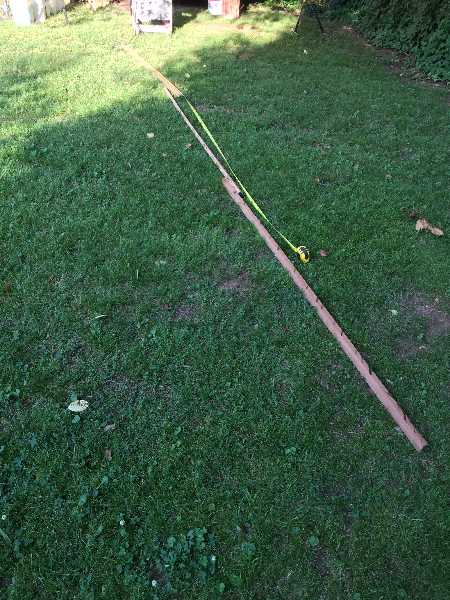
Here I'm measuring out how many strips to make up about 186 inches with an estimated length of wood for the scarf joints.
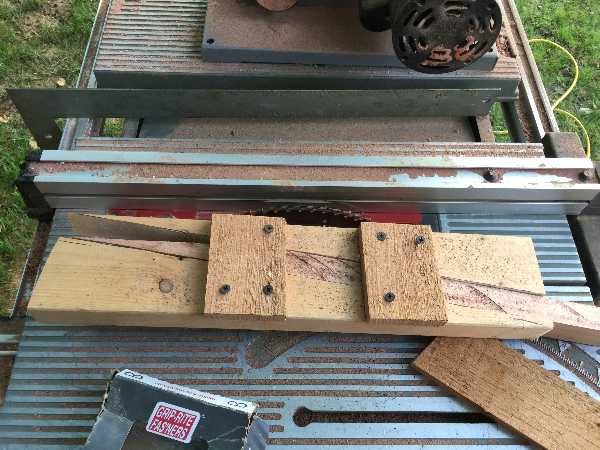
Here is the first scarfing jig. I was able to cut the scarf joints quickly with this.
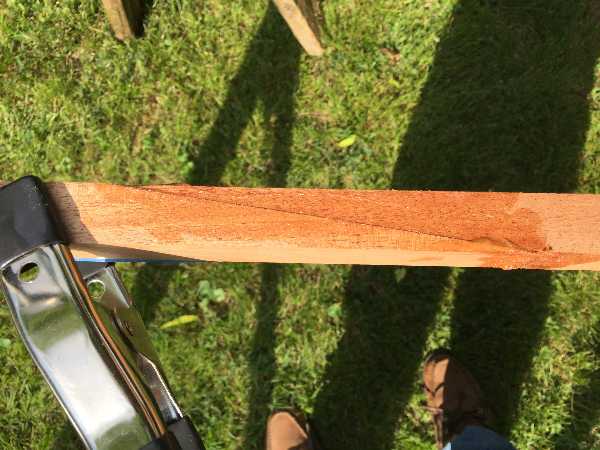
The scarf joint looks great on this side.
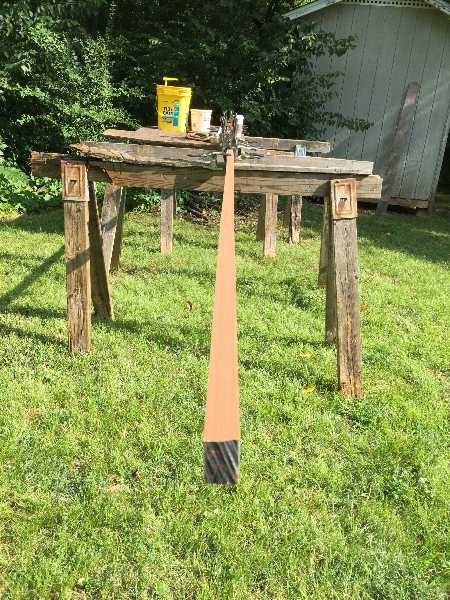
And it's strong.
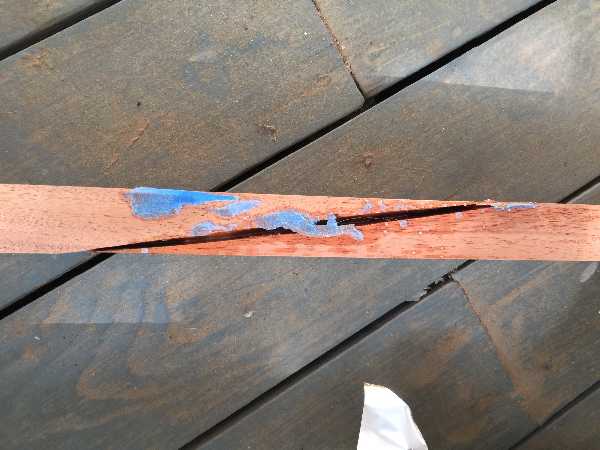
But the joint is totally unacceptable on the other side. I could fill the gap with epoxy but it would show up in the finished project like a real botch job. I declared this a complete do-over.
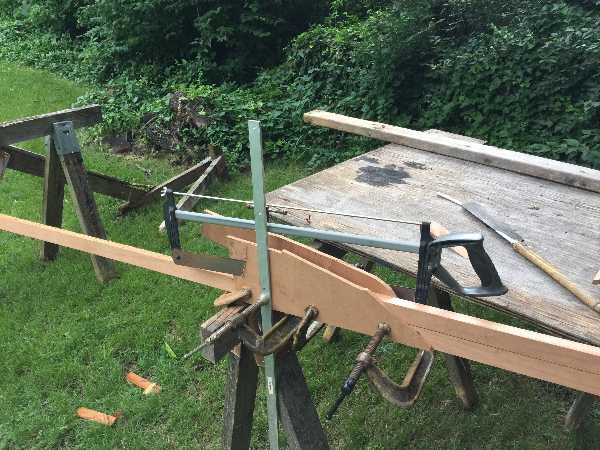
I thought about the problem. The scarfing jig that works with the tablesaw cuts two scarfs. There is a slight angle error. That jig causes the error to be the same on both pieces, effectively doubling the error and creating the large gap. Pictured here is a new scarfing jig. It works like a miter box. I put one piece in the back and cut the scarf joint face. I put the second piece in the front and cut it's scarf joint face. Because the two pieces are opposite but lined up they share the same plane that the saw cuts through. If there is any error in the angle on one piece it is exactly cancelled out by an opposite angle error of the facing piece. Hence it is easy though more time consuming to cut a really accurate scarf joint.
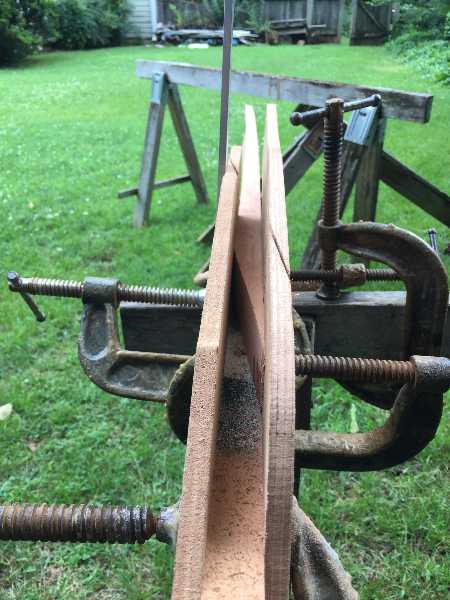
Here is a piece after its scarf joint is cut.
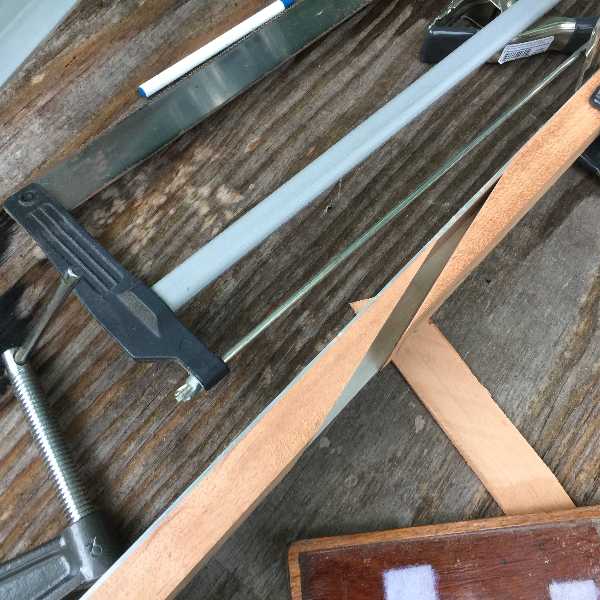
I used a piece of "L" channel aluminum to hold the two pieces straight while the epoxy cured.
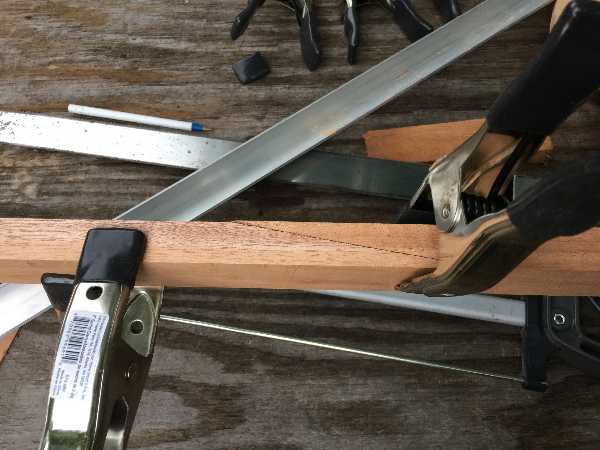
Here everything is clamped up. The finished joint has a pretty minimal gap.
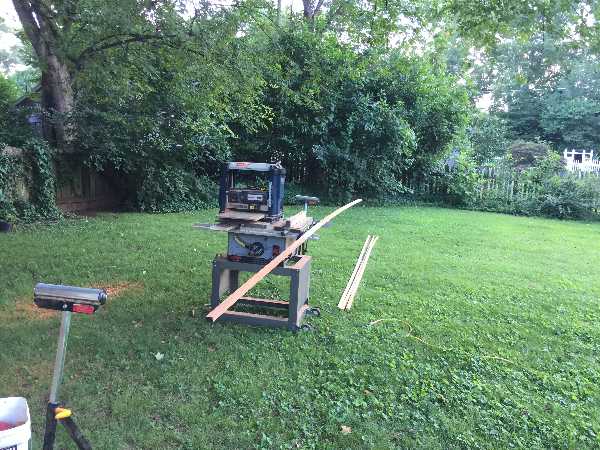
After a few days all the joints were done and I had four pieces. I planed them down slightly to further smooth the scarf joints. The joints themselves did not require much planing. Also these joints hold the weight of the wood quite well when they are cantilevered as shown here.
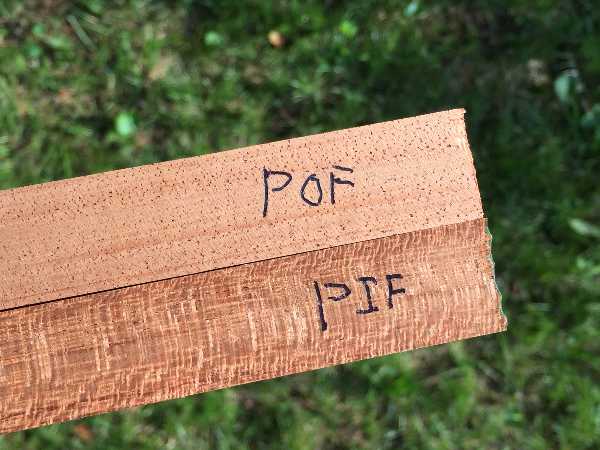
I did some trial and error fitting of the pieces. Once I was satisfied with how they looked I labeled all the ends using this system of labels.